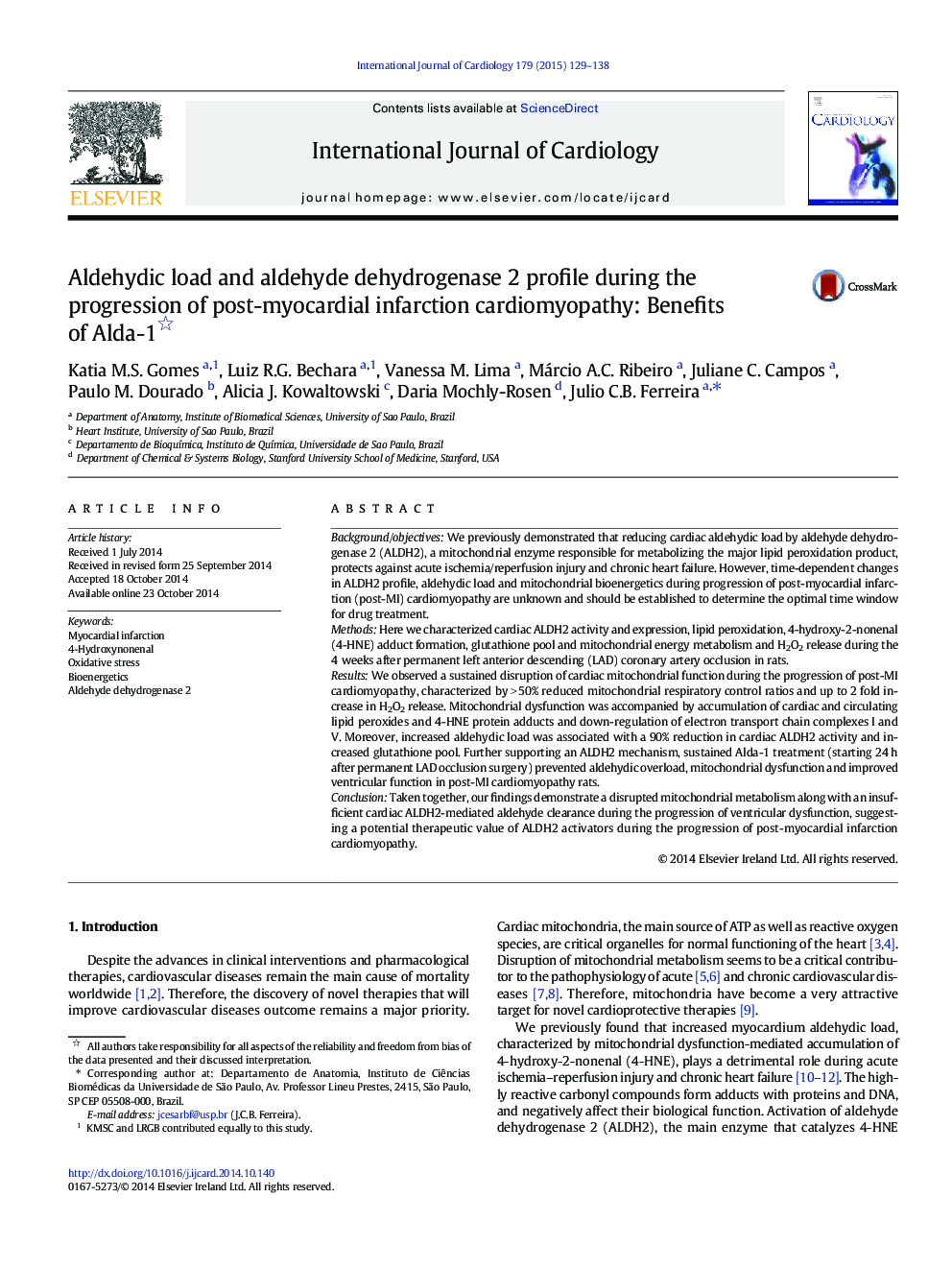| کد مقاله | کد نشریه | سال انتشار | مقاله انگلیسی | نسخه تمام متن |
|---|---|---|---|---|
| 5968954 | 1576173 | 2015 | 10 صفحه PDF | دانلود رایگان |

- We measure aldehydic load and mitochondrial function in myocardial infarction.
- Aldehyde dehydrogenase 2 activity is reduced in myocardial infarction cardiomyopathy.
- Alda-1 treatment improves cardiac function in myocardial infarction cardiomyopathy.
Background/objectivesWe previously demonstrated that reducing cardiac aldehydic load by aldehyde dehydrogenase 2 (ALDH2), a mitochondrial enzyme responsible for metabolizing the major lipid peroxidation product, protects against acute ischemia/reperfusion injury and chronic heart failure. However, time-dependent changes in ALDH2 profile, aldehydic load and mitochondrial bioenergetics during progression of post-myocardial infarction (post-MI) cardiomyopathy are unknown and should be established to determine the optimal time window for drug treatment.MethodsHere we characterized cardiac ALDH2 activity and expression, lipid peroxidation, 4-hydroxy-2-nonenal (4-HNE) adduct formation, glutathione pool and mitochondrial energy metabolism and H2O2 release during the 4Â weeks after permanent left anterior descending (LAD) coronary artery occlusion in rats.ResultsWe observed a sustained disruption of cardiac mitochondrial function during the progression of post-MI cardiomyopathy, characterized by >Â 50% reduced mitochondrial respiratory control ratios and up to 2 fold increase in H2O2 release. Mitochondrial dysfunction was accompanied by accumulation of cardiac and circulating lipid peroxides and 4-HNE protein adducts and down-regulation of electron transport chain complexes I and V. Moreover, increased aldehydic load was associated with a 90% reduction in cardiac ALDH2 activity and increased glutathione pool. Further supporting an ALDH2 mechanism, sustained Alda-1 treatment (starting 24Â h after permanent LAD occlusion surgery) prevented aldehydic overload, mitochondrial dysfunction and improved ventricular function in post-MI cardiomyopathy rats.ConclusionTaken together, our findings demonstrate a disrupted mitochondrial metabolism along with an insufficient cardiac ALDH2-mediated aldehyde clearance during the progression of ventricular dysfunction, suggesting a potential therapeutic value of ALDH2 activators during the progression of post-myocardial infarction cardiomyopathy.
Journal: International Journal of Cardiology - Volume 179, 20 January 2015, Pages 129-138